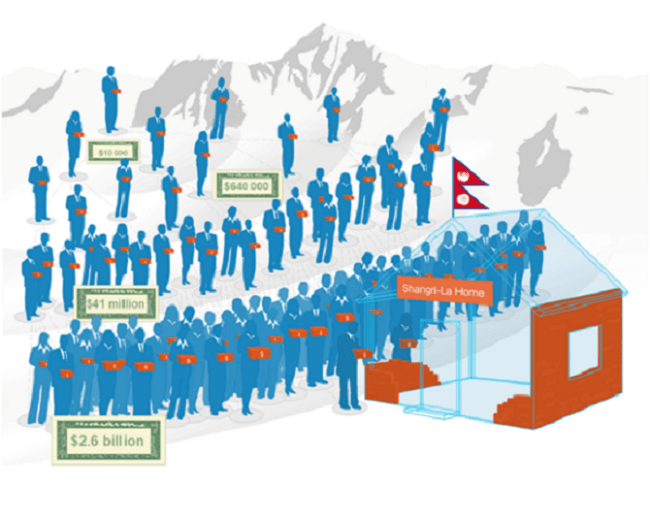Rapid Asia establishes what works and does not by providing evidence based research results to our social development partners. Technology is increasing key to our success: mobile phones for data collection, a portal for our consultancy panel and increasingly LinkedIn for marketing and networking. Here is another example of leveraging LinkedIn for business and disaster relief, posted by our new Advisory Board member Wander Meijer.
On April 30, LinkedIn lost 25% of its value, roughly US$ 5 billion. That is a lot of money, even more taking into consideration that the company posted a 35% jump in sales in the first quarter of 2015. It was the result of LinkedIn’s warning that future profits would be hurt by the strong dollar, weak ad sales in Europe and increased spending. The stock was pummeled together with Twitter (minus 25%) and Yelp (minus 23%). In the words of Colin Sebastian, a senior analyst for Robert W. Baird & Company: “Based on where some of these stocks were trading, expectations were already very high and were priced for relative perfection. The reaction when companies don’t achieve great results can be fairly severe”.
LinkedIn is my favorite social media. I don’t have enough mental versatility to tweet something interesting every other hour, so my Twitter account is still barren five years after signing up. I haven’t figured out Yelp, Pandora or Whisper, but being a baby boomer, I was quite active on Facebook. That was until it hit home that I got a lot more likes for posts of my cute dog than for my blogs, in which I combine business insights with a pinch of salt and humor. I continue to use Facebook, trying to be liked, but connecting and communicating via LinkedIn feels a lot better, being among like-minded peers.
A few days before LinkedIn’s share price shock, Nepal was hit by an earthquake of 7.9 on the Richter scale. It was a disaster waiting to happen, as the country rests on the junction of the Indian and Eurasian tectonic plates. The Indian plate is moving north at a rate of 45mm a year, which led to the earthquake resulting in more than 7,000 deaths and economic damage of US$ 5 billion.
For years, my family has sponsored a home for former street children in Kathmandu, Nepal and this home was among those destroyed in this tragedy (http://www.shangrilahome.org/index.php/en ). Currently we are raising funds for a new home, but as this is just a drop in Nepal’s ocean of misery, we’d like to do something more, something bigger. Social media is the modern day’s amplifier, so we created a special Facebook page (Posanaa) and that achieved considerable traction. And while that is good, the Facebook approach is a little too frivolous for me. I need something more serious.
What if I mobilized my LinkedIn connections? Currently I have 1,001, scattered all over the world and reasonably representative of the 364 million LinkedIn members in 200 countries. What if my LinkedIn friends would donate on average US$ 10 (2 weeks school and shelter for a child)? Of course, not everyone would donate, but many would give a lot more than US$ 10. That makes $10,000. What if 25% pass this initiative to their connections? An average LinkedIn user has 256 solid connections, and if these 64,000 LinkedIn users pay an average $10 again, that would result in $640,000. Another quarter of these 64,000 LinkedIn users would share it with their connections, donating again $10 on average and that would generate $ 41million! In the next round we could come to 1,025,024 LinkedIn users sharing the link, reaching 256 million users donating a whopping total of $2.6 billion!
More than $ 2.6 billion would be achieved with one click-share per user and donating just $ 10, proving that LinkedIn is the most effective fundraising platform in the world. LinkedIn’s value would quickly bounce back to the valuation before the earthquake, and it is only fair for CEO Jeff Weiner to donate half of those $ 5 billion to Shangri-La Home’s special HSBC bank account: 812 040046 888, SWIFT CODE: HSBCHKHHHKH with the note: Earthquake LinkedIn, increasing the donation to the $5 billion Nepal needs.

